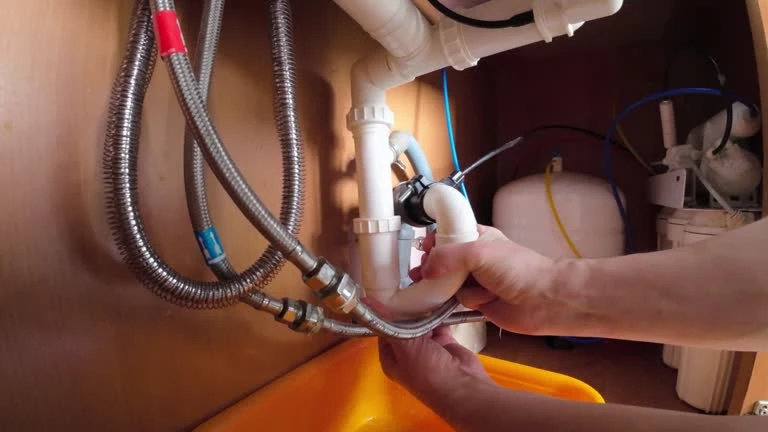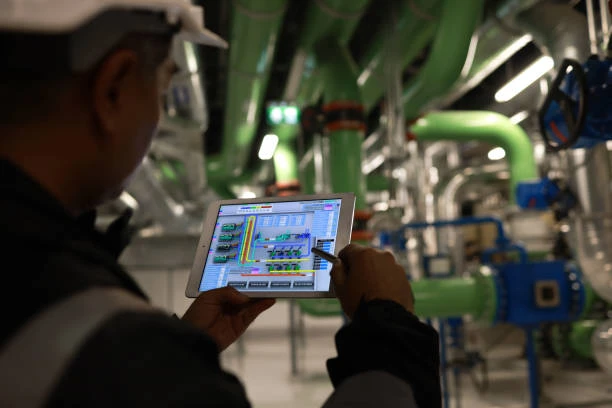1. Constant Dripping or Leaking
A healthy temperature and pressure relief (TPR) valve only releases water during abnormal pressure spikes. If you observe continuous dripping from the discharge pipe, this indicates seal failure. Hard water minerals accumulate on valve components over time, preventing proper seating. The problem worsens in areas with high mineral content in water supply. A small drip can waste hundreds of gallons annually. Check for moisture around the valve body and downstream piping. Replacement becomes urgent when dripping persists after manual testing. Modern brass-bodied valves resist mineral buildup better than older models.
2. No Water Release During Testing
Monthly testing ensures your TPR valve remains operational. When lifting the test lever, you should hear a strong gush of water into the drain pipe. Complete absence of flow suggests severe blockage or mechanical failure. Sediment accumulation in water heaters commonly migrates into valve mechanisms. The valve’s internal spring may also lose tension after years of service. Professionals recommend replacing valves that fail two consecutive tests. Always check that the drain line isn’t obstructed before condemning the valve. Newer models feature test levers that operate more smoothly.
3. Rust or Corrosion on the Valve
Visible corrosion on valve exteriors signals advanced deterioration. The galvanized steel discharge pipe often rusts first, followed by valve components. In coastal areas, salt air accelerates metal degradation. Corroded valves may freeze in either open or closed positions. Inspect where the valve body meets the water heater tank for white oxidation deposits. Some discoloration is normal, but flaking metal requires immediate attention. Consider upgrading to stainless steel valves in corrosive environments. Annual inspections should include thorough valve body examination.
4. Strange Noises From the Valve
Unusual sounds indicate improper valve operation. High-pitched whistling suggests pressure escaping through a partially opened valve. Gurgling noises may mean the valve opens at incorrect pressures. These symptoms often accompany temperature fluctuations in your hot water supply. The valve’s internal spring may be fatigued or damaged. In electric water heaters, faulty valves sometimes cause the upper thermostat to cycle excessively. Newer thermostatic valves maintain more consistent pressure regulation. Persistent noises warrant professional evaluation.
5. Water Heater Overheating Frequently
Modern water heaters should maintain steady temperatures without safety valve activation. Frequent overheating episodes suggest multiple potential issues. The valve may be stuck closed, preventing proper pressure relief. Alternatively, it could be leaking constantly, causing the heater to overwork. Check your unit’s error codes if equipped with digital displays. Gas models may show soot accumulation when overheating occurs. Electric units might trip high-limit switches. Always verify thermostat settings before blaming the relief valve.
6. How to Test Your Safety Valve Properly
Proper testing requires careful preparation. Shut off power to electric units or turn gas valves to pilot mode. Allow the tank to cool slightly before testing. Use a 5-gallon bucket to catch discharge water – it may be scalding hot. Open the lever completely for a full 5-count, then release abruptly. Observe both the initial flow and any residual dripping. Document test results for maintenance records. Consider installing an extension pipe if your drain line makes observation difficult. Professional plumbers use special gauges to verify exact opening pressures.
7. Choosing the Right Replacement Valve
Selection requires matching several specifications. Note your water heater’s working pressure (typically 150 psi) and BTU rating. Measure the valve’s NPT thread size – usually 3/4″ for residential units. Look for valves with ASME Section IV certification for guaranteed performance. Bronze bodies offer better corrosion resistance than brass in certain water conditions. Some models include built-in thermal expansion relief. Always purchase from reputable plumbing suppliers rather than generic hardware stores. Many professionals recommend replacing the discharge tube simultaneously.
8. Professional Installation Tips
Proper installation ensures long-term reliability. Drain the tank completely to avoid water spillage during replacement. Apply two wraps of Teflon tape clockwise on male threads. Use two wrenches – one to hold the heater nipple steady while tightening the valve. Avoid overtightening which can crack heater fittings. After installation, slowly refill the tank and check for leaks before restoring power. Many municipalities require licensed plumbers to perform this work for warranty compliance. Consider adding a water alarm near the drain line for early leak detection.
9. Understanding Valve Failure Consequences
A failed TPR valve risks catastrophic tank rupture. Water heaters can become dangerous missiles under extreme pressure. Most home insurance policies exclude damage from unmaintained safety devices. Local building codes mandate functional pressure relief systems. Failed valves often cause collateral damage to floors, walls and ceilings. The resulting water damage typically exceeds $5,000 per incident. Regular maintenance provides documentation for insurance claims.
10. Preventative Maintenance Schedule
Establish a comprehensive maintenance routine. Test valves every six months without exception. Flush your water heater annually to reduce sediment accumulation. Install whole-house water filters if you have hard water. Consider professional inspections every three years for gas models. Keep the area around valves clear for easy access. Label valves with installation dates for easy tracking. Upgrade to smart water monitors that detect leaks automatically.
IFAN Products international standards
IFAN products strictly adhere to a comprehensive range of international standards, encompassing ISO 15874, EN 15874, ASTM F2389, DIN 8077/8078, GB/T 18742, NBR 15884, ISO 15494, EN ISO 15494, GB/T 19472, NBR 15494, ASTM 2846 (501), DIN 8079/8080 (502), ASTM F441/F441M SCH80 (503), DIN (504), DIN (505), GB/T 18993, AS/NZS 1477, CSA B137.6, NSF/ANSI 14, TIS 17-2532/1131-2535, BS 3505, BS 4346 (801), ASTM D1785 SCH40 (802), ASTM D1785 SCH80 (803), DIN (804), GB (805), GB (806), GB(901), DWV(902), ASTM D2665 (903), along with ASTM D2241, D2665, D2729, and F441/F441M series, ISO 1452, EN ISO 1452, DIN 8061/8062, GB/T 10002, AS/NZS 1477, JIS K6741, CSA B137.3, and other national and industry norms.
Connect
IFAN is a Chinese manufacturer of plastic pipes, fittings and valves with 30 years of experience. If you are interest in IFAN copper fittings, copper valves, plastic pipes and fittings, please contact us. IFAN offers you a variety of standard pipes to meet your specific needs. Click below to learn more about IFAN’s wide range of affordable and cost-effective valve products and piping system related products.
We will reply your email or fax within 24 hours.
You can call us at any time if there is any question on our production.
For more information,pls visit our webside https://waterpipefitting.com/
Pls Mailto: [email protected]
Whatsapp: +86 15088288323














Recent Comments